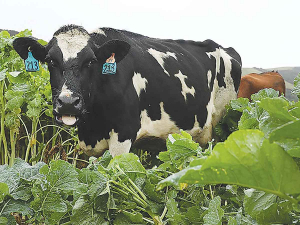Waikato dairy effluent breaches lead to $108,000 in fines
Two farmers and two farming companies were recently convicted and fined a total of $108,000 for environmental offending.
 Controlled grazing that reduces the amount of time animals spend on pasture helps mitigate nitrogen losses.
Controlled grazing that reduces the amount of time animals spend on pasture helps mitigate nitrogen losses.
Simple actions can reduce winter nutrient loss, explains Bala Tikkisetty, sustainable agriculture advisor at Waikato Regional Council.
Winter is around the corner and currently most farmers are focusing on achieving increased productivity by judicious use of nutrients, with an aim of minimising environmental impacts.
Cooler months can pose a significant challenge for nutrient management. Some simple actions can reduce winter nutrient loss.
Caution must be taken when applying nitrogen fertilisers to pasture or crops during winter.
Winter applications of nitrogen fertilisers are generally least effective for promoting grass growth. Slow growth of pasture in winter and drainage can result in nitrate leaching directly from fertiliser before plants can take it up.
Milking cows will excrete, in urine, about 70 per cent of the nitrogen consumed. The risk of nitrogen leaching from urine patches is much higher in winter.
Leaching (nitrogen) and run off (phosphorus) losses not only contaminate water bodies but also represent a loss of economically valuable nutrients. Most nitrogen is leached during winter and early spring when rainfall exceeds evapo-transpiration. Generally, the pasture species are not active during low temperatures adding to the potential for nitrogen loss through leaching.
Some of the research to mitigate the nitrogen losses has focused on growing pasture with more rooting depth for interception of nitrate, duration controlled grazing for reducing the amount of time animals spend on pasture, and feeding high sugar grasses for reducing the dietary protein.
Nutrient budgeting using computer models such as Overseer, combined with feed budgeting, enables farmers to understand whether they are using too much or too little fertiliser.
It is important that all farmers to understand the technical term, “response rate”. The response rate is the amount of pasture grown in terms of kilograms of dry matter (DM) per hectare per kilogram of nitrogen (N) applied.
For example, when 30kg N/ha is applied and an additional 300kg DM/ha of pasture is grown the response rate is 10kg DM/kg N applied.
The response is dependent on several factors such as soil temperature, plant growth, soil moisture, the deficiency of available nitrogen in the soil and the rate of nitrogen applied per application.
The best response to N fertiliser occurs on fast growing pasture, when other factors such as moisture and soil temperature are not limiting growth.
Response rate variation also depends on the season and on nitrogen application rate. In winter, at the same application rate, responses are lower and slower than other times of the year. The response rate also declines when the application rate (single dose) is higher than 30kg N/ha.
Nitrogen fertiliser reduces nitrogen fixation by clover by about 1kg N/ha/year for every 3kg nitrogen fertiliser applied. In addition, clover content will be further reduced if nitrogen boosted pastures shade the clover. This effect is seen during spring.
‘Nitrogen conversion efficiency’ for any farm is another key point to remember. It is calculated from the total nitrogen in product divided by the total nitrogen inputs into a farm and is expressed in percentage. For a dairy farm, if it is around 40%, probably the farmer is doing fine.
Further, owing to the prolonged dry spell, nitrate poisoning can result from high nitrate levels in pasture, usually occur in late autumn. This is particularly during a flush of growth where nitrate levels build up in herbage as nitrate is taken by the plant faster than it can be converted into protein. Toxicity risk progressively increases with high soil nitrogen from various sources.
The profitability of applying nitrogen is dependent on the utilisation of the extra feed. Therefore, nitrogen needs to be strategically applied to fill genuine feed deficits.
• Bala Tikkisetty is a sustainable agriculture advisor at Waikato Regional Council. Ph 0800 800 401 or email This email address is being protected from spambots. You need JavaScript enabled to view it.
Legal controls on the movement of fruits and vegetables are now in place in Auckland’s Mt Roskill suburb, says Biosecurity New Zealand Commissioner North Mike Inglis.
Arable growers worried that some weeds in their crops may have developed herbicide resistance can now get the suspected plants tested for free.
Fruit growers and exporters are worried following the discovery of a male Queensland fruit fly in Auckland this week.
Dairy prices have jumped in the overnight Global Dairy Trade (GDT) auction, breaking a five-month negative streak.
Alliance Group chief executive Willie Wiese is leaving the company after three years in the role.
A booklet produced in 2025 by the Rotoiti 15 trust, Department of Conservation and Scion – now part of the Bioeconomy Science Institute – aims to help people identify insect pests and diseases.
President Donald Trump’s decision to impose tariffs on imports into the US is doing good things for global trade, according…
Seen a giant cheese roll rolling along Southland’s roads?